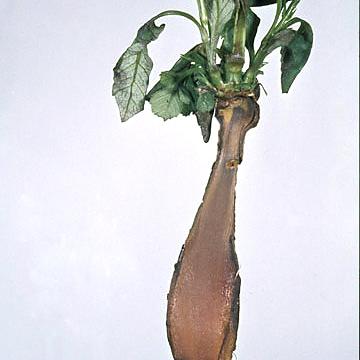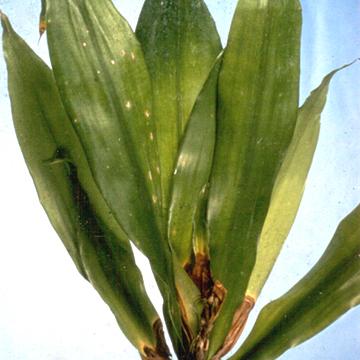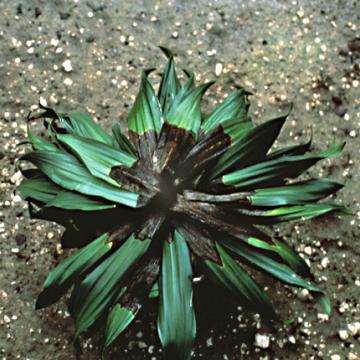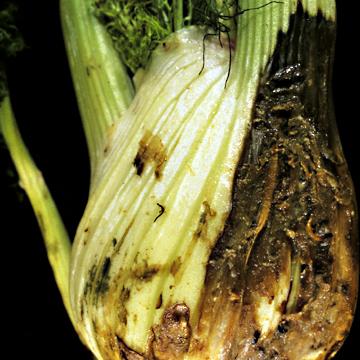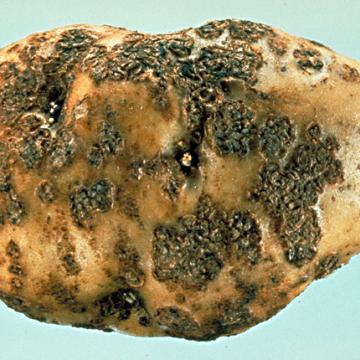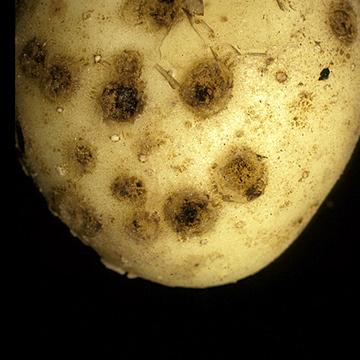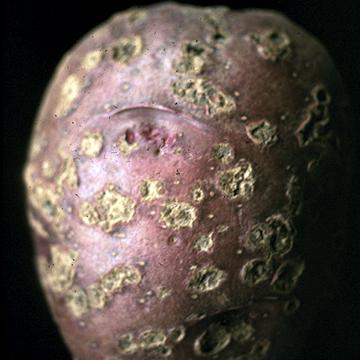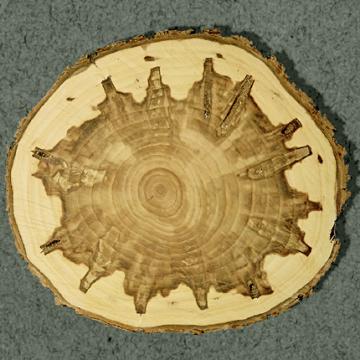DISEASE: Bacterial rot
HOST: Dahlia
Longitudinal section of dahlia with discolored, rotted tissues.
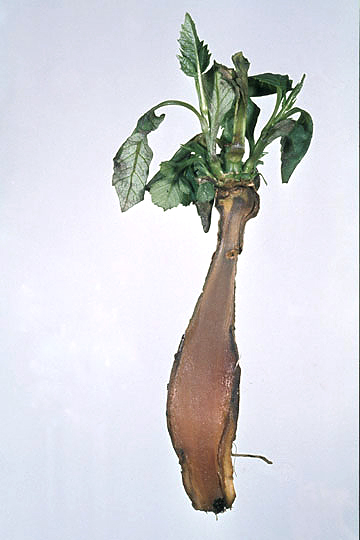
Bacterial rot | Dahlia
DISEASE: Bacterial rot
HOST: Dahlia (Dahlia sp.)
PATHOGEN: Dickeya sp.
PATHOGEN SYNONYM: Erwinia chrysanthemi
SOURCE: J. Young
DISEASE: Bacterial rot
HOST: Dracaena
Rot at base of leaves.
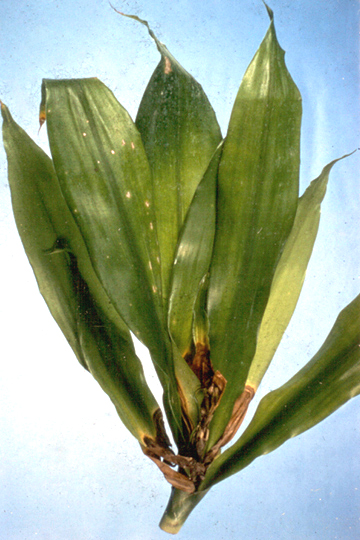
Bacterial rot | Dracaena
DISEASE: Bacterial rot
HOST: Dracaena (Dracaena deremensis)
PATHOGEN: Dickeya sp.
PATHOGEN SYNONYM: Erwinia chrysanthemi
SOURCE: A. Alvarez
DISEASE: Bacterial rot
HOST: Dracaena
Systemic rot throughout central stems.
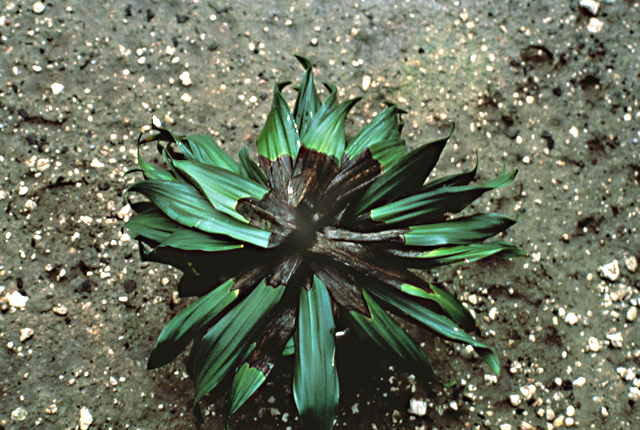
Bacterial rot | Dracaena
DISEASE: Bacterial rot
HOST: Dracaena (Dracaena deremensis)
PATHOGEN: Dickeya sp.
PATHOGEN SYNONYM: Erwinia chrysanthemi
SOURCE: A. Chase
DISEASE: Bacterial rot
HOST: Fennel
Soft rot of fennel.
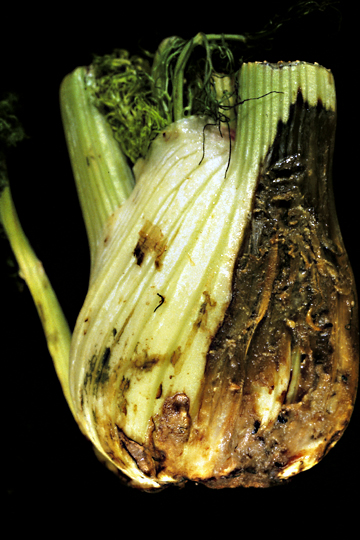
Bacterial rot | Fennel
DISEASE: Bacterial rot
HOST: Fennel (Foeniculum vulgare)
PATHOGEN: Dickeya sp.
PATHOGEN SYNONYM: Erwinia chrysanthemi
SOURCE: R. Davis
DISEASE: Common scab (Potato scab)
HOST: Potato
Symptoms of common scab vary depending upon the cultivar. The lesions can be shallow or deep, erumpent and corky, and vary in color.
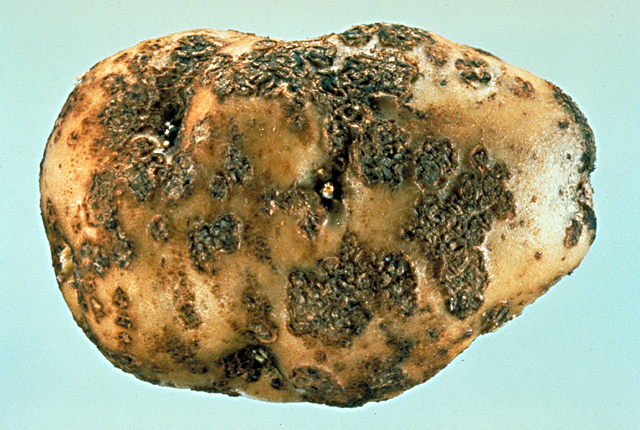
Common scab (Potato scab) | Potato
DISEASE: Common scab (Potato scab)
HOST: Potato (Solanum tuberosum)
PATHOGEN: Streptomyces scabiei
PATHOGEN SYNONYM: Streptomyces scabies
SOURCE: A. Secor
DISEASE: Common scab (Potato scab)
HOST: Potato
White-skinned tuber with sunken and superficial scab lesions.
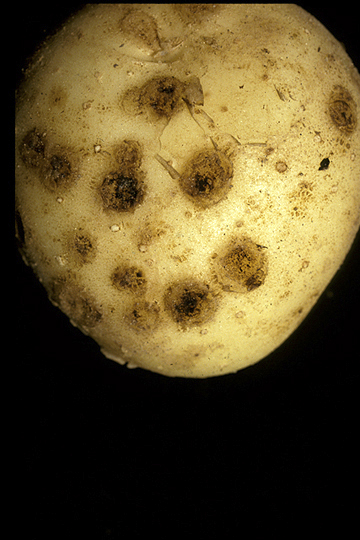
Common scab (Potato scab) | Potato
DISEASE: Common scab (Potato scab)
HOST: Potato (Solanum tuberosum)
PATHOGEN: Streptomyces scabiei
PATHOGEN SYNONYM: Streptomyces scabies
SOURCE: S. Thomson
DISEASE: Common scab (Potato scab)
HOST: Potato
Red-skinned tuber with lesions that usually penetrate less than 1 mm.
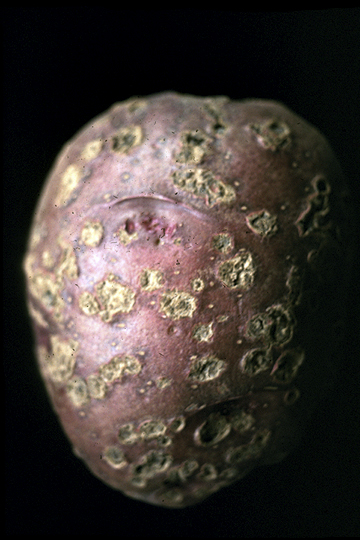
Common scab (Potato scab) | Potato
DISEASE: Common scab (Potato scab)
HOST: Potato (Solanum tuberosum)
PATHOGEN: Streptomyces scabiei
PATHOGEN SYNONYM: Streptomyces scabies
SOURCE: S. Thomson
DISEASE: Western wetwood
HOST: Elm
Spokelike, discolored extensions that expanded into sapwood, following an injection with a fungicide. The causal agent is not known but symptoms are associated with bacteria and yeast.
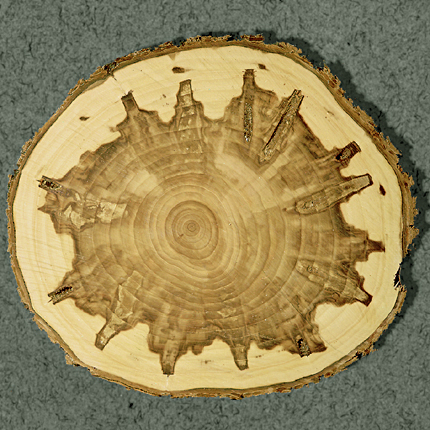
Western wetwood | Elm
DISEASE: Western wetwood
HOST: Elm (Ulmus americana)
PATHOGEN: Causal agent unknown
SOURCE: W. Sinclair


